How to Identify and Attract a Gray Catbird
Updated: May 18, 2023
Listen for the "mewing" call of a gray catbird in summer. These birds love to eat fruit, prefer dense thickets, and can mimic other birds.
What Does a Gray Catbird Look Like?
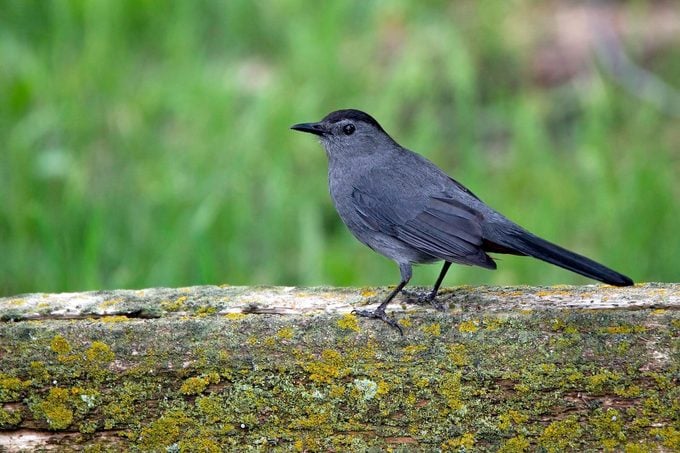
- Length: 8-1/2 inches
- Wingspan: 11 inches
- Distinctive Markings: Slate-gray body with a black cap and tail, rust-red feathers under tail
- Scientific Name: Dumetella carolinensis
Family: Mimic thrush
Learn about 15 common backyard birds you should know.
What Does a Gray Catbird Eat?
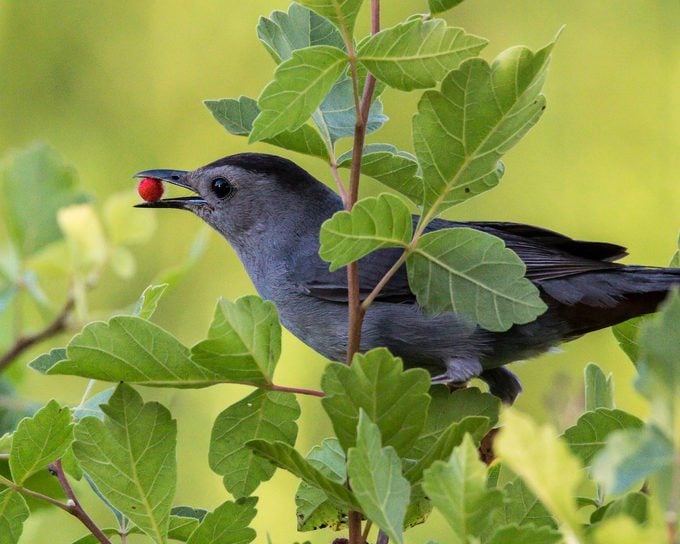
Catbirds have a slew of insects to munch on in summer. They indulge in ants, caterpillars, beetles, grasshoppers and moths. And you might spot gray catbirds feasting on the grape jelly you put out for orioles. They also like berries, so consider planting berry trees and bushes such as dogwood, winterberry and American beautyberry to attract them to your backyard.
Catbirds may seem endearing, but they are considered pests by gardeners and farmers who grow raspberries, cherries, grapes and strawberries.
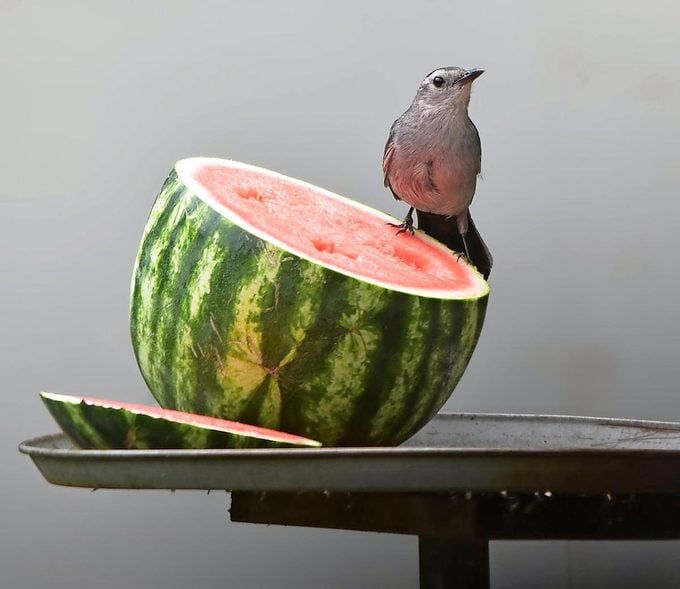
- Diet: Insects and berries
- Backyard Favorites: Grape jelly and bird baths
Gray Catbird Nest and Eggs
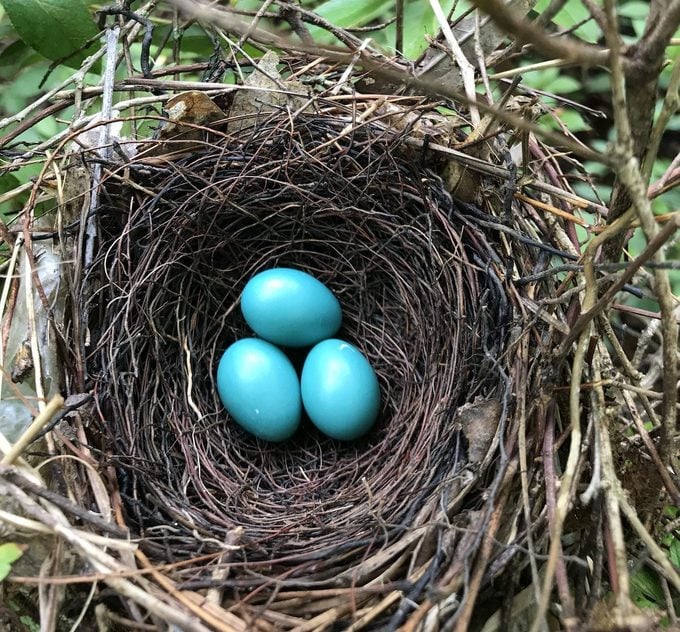
A male catbird may help gather twigs, bark and other nesting materials, but the female solely builds the cup-shaped nest. It takes about five days to build the bulky, open-cup-shaped structure. Look for these nests hidden in low dense shrubs or vines about 4 feet off the ground.
- Nest: Builds nest in a garden shrub or thickets near creeks or swamps
- Eggs: Female usually lays four glossy teal eggs
“A gray catbird family made a nest (above) in one of my large azalea bushes in June 2020. I was proud to have this family in my backyard. They are beautiful and have such a distinct call,” says reader Beverly Derouen, of Ragley, Louisiana.
Learn about the different kinds of bird nests and how to spot them.
Gray Catbird Call and Song
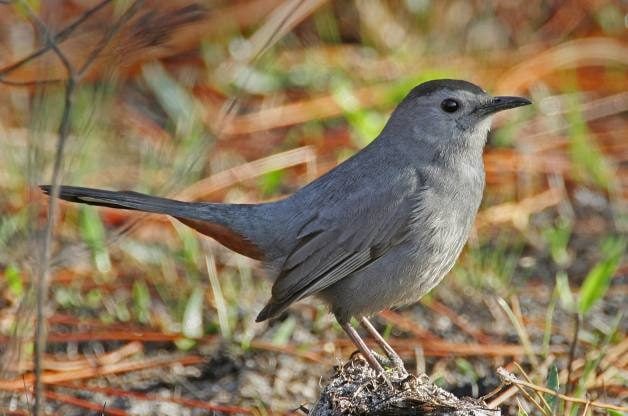
Listen to the gray catbird’s song.
Bird songs provided by the Cornell Lab of Ornithology.
Gray catbirds get their name for their call, a catlike mewing. And don’t let a gray catbird fool you with its mimic calls. Similar to mockingbirds and thrashers, it can easily imitate the songs of other popular backyard birds. Male catbirds belt out these tunes from the tops of thickets or shrubs.
- Voice: Alarm call is a catlike mewing; song is a mix of notes, may mimic other songbirds.
Range Map
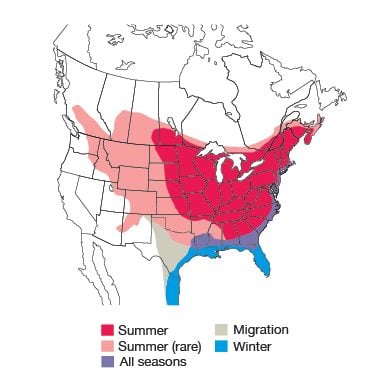
Range maps provided by Kaufman Field Guides, the official field guide of Birds & Blooms.
